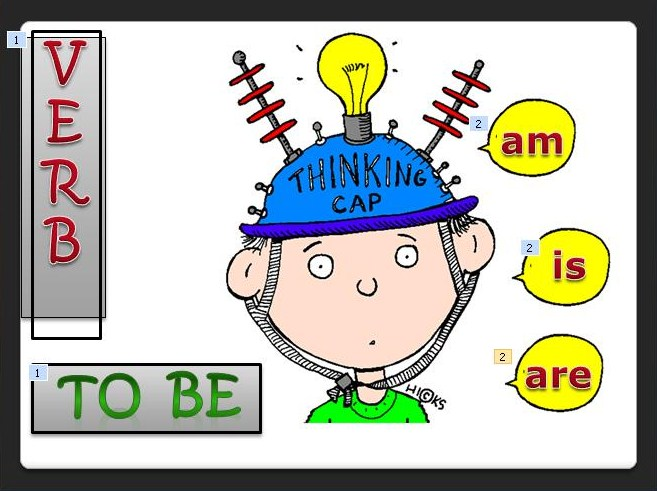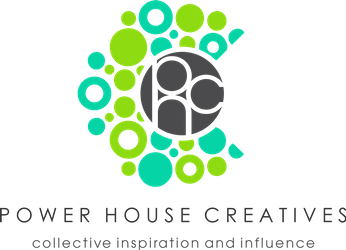Learn English With Snow - Lesson # 4 - Verb To Be (present)
Hello superheroes and everyone who shares their fantastic content on the always reliable #steem blockchain. It has been a couple of weeks since the last time I posted an English lesson but that doesn't mean we're not going to continue with this mission, so here we are once again with yet another English class. Hope you guys enjoy it!

Source
In our last lesson we studied about the Personal Pronouns (Subject Pronouns), lesson you can find here, in case you missed it. Today's lesson is about the Verb To BE in its present form, common uses, contractions, among other details in this Two part lesson.

Let's begin, shall we?

Source

Verb "To Be"
Before starting there are a few things I'd like to point out about the verb to be. First of all, we need to take notice that the verb to be is Irregular, therefore its form is completely different when we compare it to other verbs. It is a verb that is commonly used in English; Reason enough to try to understand it as all of its forms.
For the purposes of this lesson, we are going to explain the verb to be in its present form. We are going to understand the structure in affirmative, negative, and question sentences, uses, rules, and exceptions.

Affirmative Form.

Source
Structure: Noun + verb to be (present form)
I am happy (first person singular)
you are happy (second person singular)
he/she/it is happy (third person singular)
we are happy (first person plural)
you are happy (second person plural)
they are happy (third person plural)
Contractions
For contractions we're going to use the punctuation mark Apostrophe (')
I'm happy
you're happy
he's/she's/it's happy
we're happy
you're happy (second person plural)
they're happy
Contracted forms are more used in conversational english than written english. I always tell my students that most of the times it depends on the scenario you are surrounded with. If you are chatting with friends, or are in a not so formal situation, you can go ahead and use more contractions in your writing.
As you can observe in the sentences, each personal pronoun is followed by the proper verb to be. They're highlighted in black. Also notice that as stated in the structure, the position of the verb to be is after the noun or personal pronoun, in the case of affirmative sentences. Take into account that you can substitute personal pronouns for other nouns but the function and rules are still the same, the only thing that changes is the subject but the verb to be remains the same.
Let's take a look:
Karen (she) is happy
Peter (he) is happy
The dog (it) is happy
Karen and Peter (they) are happy
Peter and I (we) are happy

Negative Form.

Source
Structure: Noun + verb to be (present form) + Not
I am not happy
you are not happy
he/she/it is not happy
we are not happy
you are not happy
they are not happy
Contractions
You can contract this form as we did with the affirmative one. Let's see:
I'm not happy
you're not happy
he's/she's/it's not happy
we're not happy
you're not happy
they're not happy
Or this way:
I am not happy
you aren't happy
he/she/it isn't happy
we aren't happy
you aren't happy
they aren't happy
Observe how the structure remains the same with the difference that we must add not after the verb to be in order to negate. As for contractions there are two ways to contract the negative form as provided in the examples. Remember that you can substitute personal pronouns for other nouns.
Karen (she) is not happy
Peter (he) is not happy
The dog (it) is not happy
Karen and Peter (they) are not happy
Peter and I (we) are not happy

Interrogative form

Source
Structure: verb to be (present form) + noun + ------ ?
am I happy?
are you happy?
is he/she/it happy?
are we happy?
are you happy?
are they happy?
As for contractions we can use them in negative questions, Let's take a look:
aren't you happy?
isn't he/she/it happy?
aren't we happy?
aren't you happy?
aren't they happy?
Did you see the structure of the question form? What's the difference between this form and the negative, or affirmative one? Yes! You got it, in the interrogative form we just need to switch the position of the verb to be; It goes first followed by the noun or personal pronoun, a complement and a question mark (?) which is mandatory for questions. It's suffice to say you can use nouns instead of personal pronouns.
is Mariam (she) happy?
is Juan (he) happy?
is the cow (it) happy?
are Jon and I (we) happy?
are Lex and Sara (they) happy?

There are two ways of using the verb to be, or at least these two are the most common: We can use it as a Main Verb, or we can use it as an Auxiliary Verb. Let's take a more in depth look of these uses:

As a main verb.
As a main verb the verb to be can help us to link with other verbs, this is what we call a "linking verb" these linking verbs don't necessarily explain the action performed by the subject, instead they give us more details about the subject we're talking about in a sentence, hence as a main verb, the verb does not take a direct object but takes a another verb as a complement which are classified in 3; Let's have a look:
Verb to be + Noun
Peter is a mailman
They are students
I am a pilot
Verb to be + Adjective
Bethalea is gorgeous
My mother is young
The dogs are mad
Verb to be + Prepositional phrase
Trina is under the table
They are from Canada
She is in the shower
As you can see, the verb to be is acting as a main verb in all of these cases. There is no action in any of these sentences. The verb to be acts as key to give us more information about the main subject, it may tell us about the location or to describe in more detail the main noun we're talking about. It indicates the existence of a person or a thing as it describes it.

As an auxiliary verb.
An auxiliary verb, also known as a "helping verb" is a verb which helps us to express the different meanings of a clause such as tense, voice, sentiment, etc... They are usually linked to a main verb. Let's see:
To be + Present Participle (continuous tenses)
To be + Past Participle (passive voice)
I am studying
She is playing
They are singing
Observe how the verb to be is acting as a helping verb (not main) to describe a continuous action. Notice, too how it's followed by another verb (main verb) which is the real action actually happening. The verb to be as an auxiliary doesn't describe the action, it helps the main verb.

Glossary
Personal Pronoun: A word which we use to identify someone or something, it represents a noun.
Adjective: A word which is used to describe a person, animal, object or thing.
Noun: A word which is used to identify people, animals, objects, things. Ex: Maria, Cat, Apple, Car.
Steemit: A social media that pays its users for creating original content on the steem blockchain.
Verb: A word which we use to describe an action in a setence.

About upcoming posts and final thoughts.
First of all, Thank you! for getting up until this point, that means you were an honest reader and paid close attention to the lesson.
If you have any questions, something to add or correct, or whatever information you need about the lessons, please feel free to ask on the comments. You can also reach me out on Discord (jonsnow1983#6946) or Twitter https://twitter.com/TheRealSnowJon

If you enjoyed this lesson please help my cause and support it with an upvote and resteem so more people would have the chance to learn more in-depth about this beautiful and important language.



Yes very good lesson. I however have a personal agenda to end use of the Apostrophe! It is ridiculous and redundant!
For example: I'm is short for I am. Ok we do not save any typing if we must hunt for the Apostrophe key! Everyone can plainly see that Im is the same as I'm.
I could agree with that observation if English was my main. Somehow I got use to Apostrophes, it's like typing them. One thing that I have noticed is the necessity of native speakers to short the language.
Cheers!